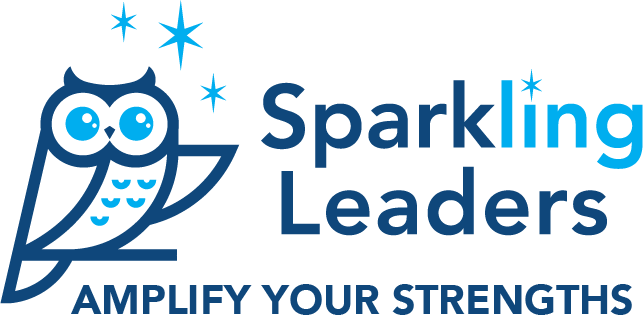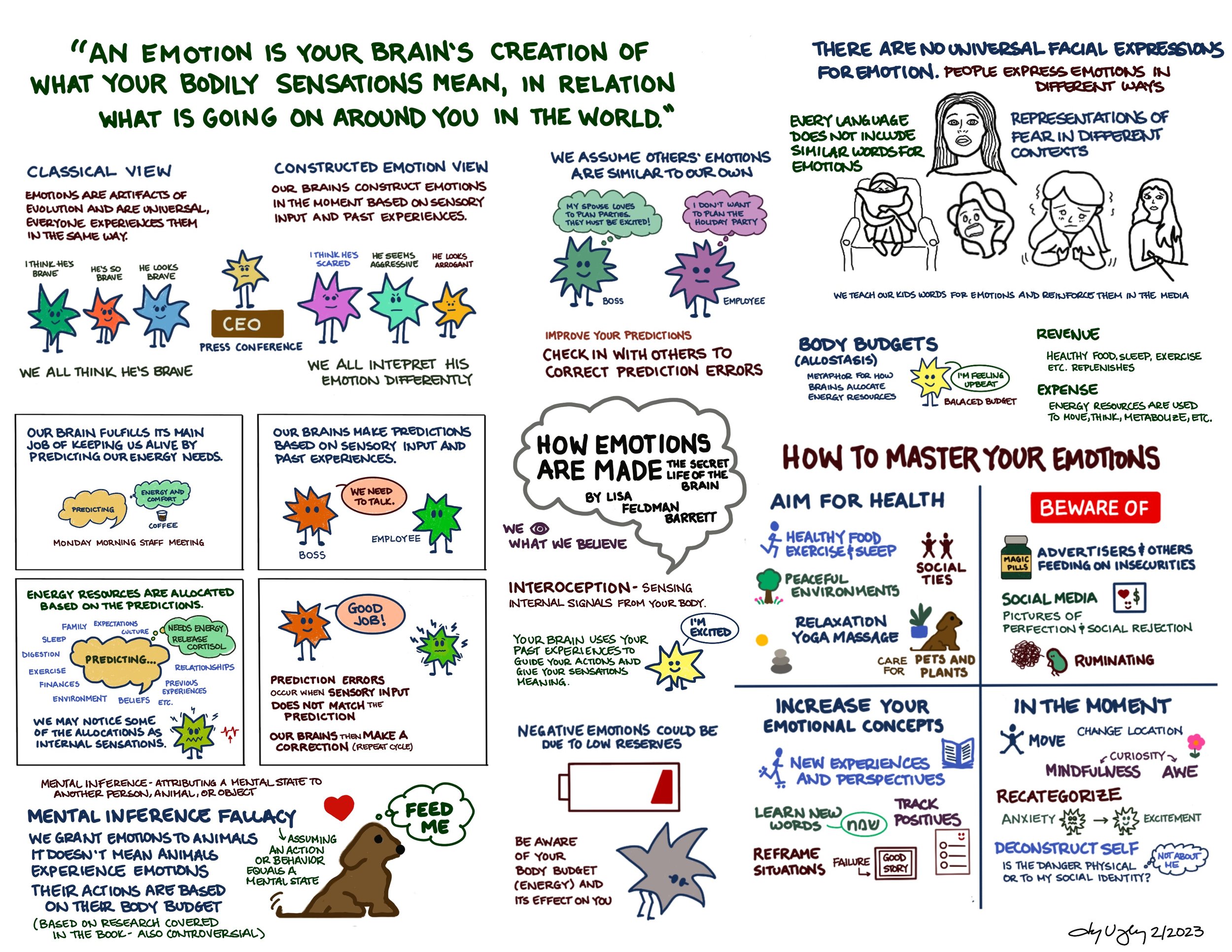Understanding Emotions for Success
Session resources based on the book How Emotions are Made: The Secret Life of the Brain by Lisa Feldman Barrett.
Key Takeaways
Our brains construct emotions in the moment based on sensory input and past experiences.
There are no universal facial expressions of emotion.
Our brain’s primary job is to keep us alive by predicting our energy needs and allocating resources.
When the predictions do not match the sensory input, our brains make corrections (prediction loop: predict, simulate, compare, resolve errors)
Our brain uses past experiences to give sensations meaning. Low resources such as lack of sleep may be interpreted as negative emotions
Tips
Pause to observe and be curious about others’ behaviors, and our own. Catching prediction errors (assumptions) helps us learn.
Eat well, sleep, exercise, relax, and take care of your body budget (resources)
Try on new perspectives
Pinpoint how you feel throughout the day. Try to be specific.
Learn or make up words to describe feelings.
In the moment: Label, reframe, or recategorize what you are feeling; think about whether the issue is a physical threat or about your social identity.
To Reflect On and To Do
If these are new concepts, start by reflecting on how your brain predicting and correcting might be faster than constantly taking in all stimuli and reacting. Does it change how you see yourself and others? Does it change how you think about how you approach stakeholders?
Have you ever noticed people interpreting something based on what they believe? Can you think of a time when you made interpretations of situations or behaviors based on your past experiences or beliefs?
What would need to happen for your body budget to be balanced more often?
Can you increase your emotional granularity by check in throughout the day or expanding your vocabulary? Spend two minutes trying to list as many words as possible for an emotion, like happiness or confidence. Create and document your own emotion words.
Resources Books, websites, and apps
Session content based on the book How Emotions Are Made: The Secret Life of the Brain, by Lisa Feldman Barrett
Lisa’s website and her acclaimed TED Talk from 2018
Permission to Feel: Unlocking the Power of Emotions to Help Our Kids, Ourselves, and Our Society Thrive by Marc Brackett
Marc Brackett’s website and his How We Feel app (recording emotions throughout the day)
Six Seconds website; their interactive scale to support shifting emotions and their interactive Plutchik wheel of emotions
Articles
Facial Expressions Do Not Reveal Emotions - Scientific American
Applying the Theory of Constructed Emotion to Police Decision Making
Are You Budgeting for Emotional Intelligence? - International Coaching Federation
Interoception: How We Understand Our Body’s Inner Sensations – Association for Psychological Science
To Be Energy-Efficient, Brains Predict Their Perceptions | Quanta Magazine
Why It's Imperative We All Learn To Be 'Emotion Scientists' | KQED
Resources: Basic Background
Marc Brackett’s Emotion Scientist RULER skills
Recognize our own emotions and those of others, not just in the things we think, feel, and say but in facial expressions, body language, vocal tones, and other nonverbal signals.
Understand those feelings and determine their source— what experiences actually caused them— and then see how they’ve influenced our behaviors.
Label emotions with a nuanced vocabulary.
Express our feelings in accordance with cultural norms and social contexts in a way that tries to inform and invites empathy from the listener.
Regulate emotions, rather than letting them regulate us, by finding practical strategies for dealing with what we and others feel.

